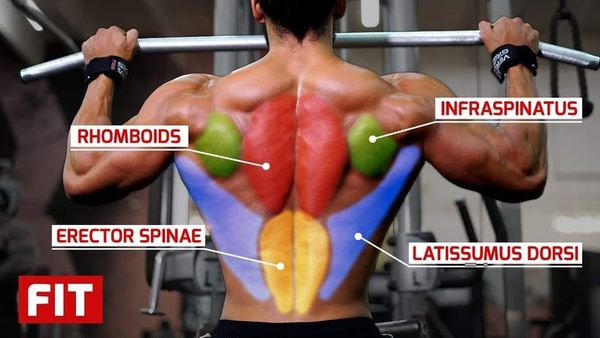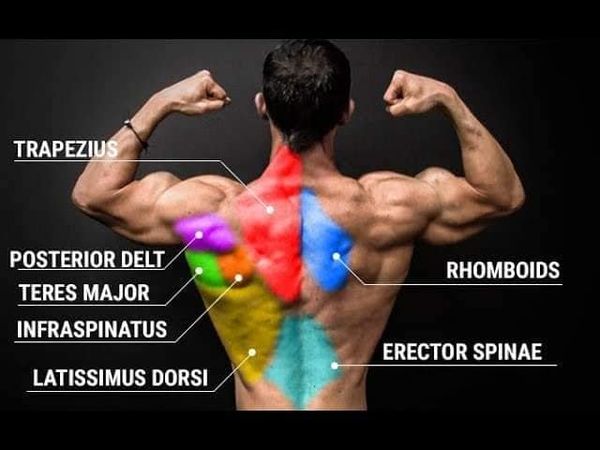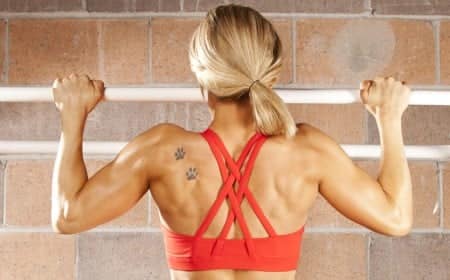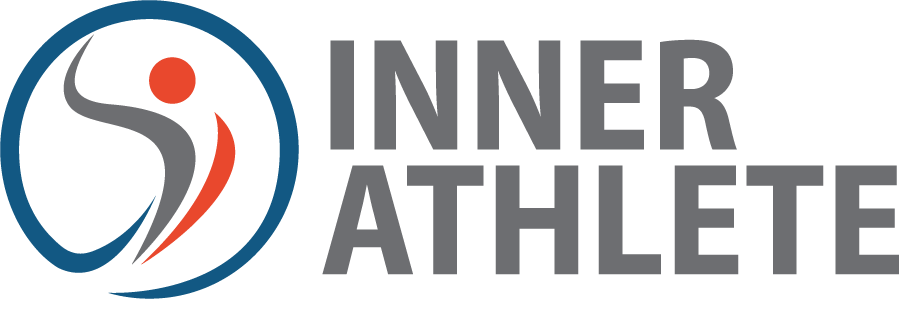![]() Spotlight On Back
Spotlight On Back



Your back has many different muscles. They help to support your spine and trunk, move your body, and assist with breathing.
ANATOMY
One of the largest muscle groups in your body, the latissimus dorsi is second only in size to the gluteus maximus.
The major back muscles consist of:
1. Latissimus Dorsi (lats) –
The largest muscle in the upper part of your body. It starts below your shoulder blades and extends to your spine in the lower part of your back. If you want that nice v-shape with the illusion of a small waist, this is your muscle.
2. Rhomboids –
Two muscles (the rhomboid major and minor) that work together to pull the scapula inward toward the spine.
3. Trapezius (traps) –
Helps you raise your arms and have good posture. The traps start at your neck, extend to your shoulders, and then down to your lower back to create a triangular shape. The trapezius is divided into three parts: the upper, middle, and lower trapezius.
4. Infraspinatus –
Your infraspinatus muscle is a thick triangular muscle located at the back of your shoulder. It’s attached to the top of your upper arm bone (humerus) and your shoulder blade (scapula).
5. Erector Spinae –
A deep muscle of the back; it arises from a tendon attached to the sacrum (the part of the backbone at the level of the pelvis, formed of five vertebrae fused together). When it reaches the small of the back, the erector divides into three columns, each of which has three parts. The muscle system extends the length of the back and functions to straighten the back and to rotate it to one side or the other. Think reaching down to pick something up, then standing up straight.
EXERCISE PLAN TIPS
Back is a large muscle group. For a split, focused plan (meaning back would be a primary exercise focus that day), do at least 4 exercises for back.
For a push-pull workout plan, back is considered a pull exercise.
Additionally, change up the exercises each time you work your back (for example, each week) so that you are targeting your muscle group in different ways.
Sources: Cleveland Clinic, Fit, Jeff Cavaliere, WebMd, Brittanica, verywellfit, Muscle and Fitness
